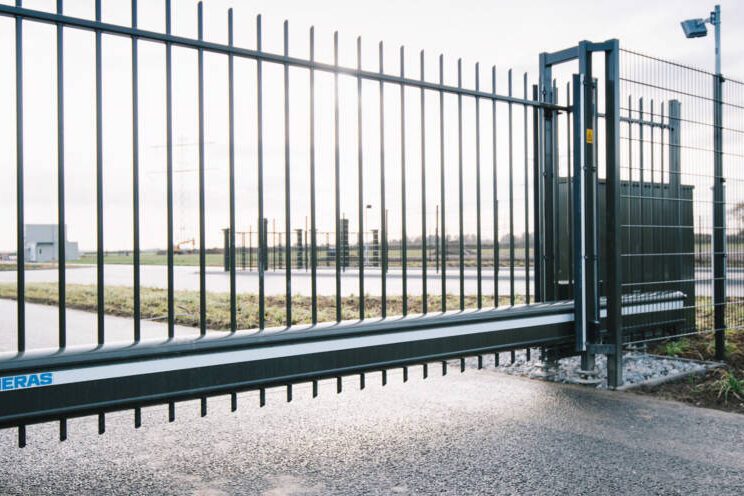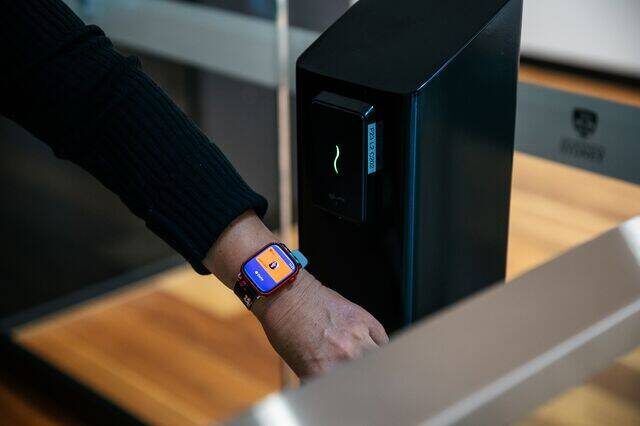With businesses closing around the world to protect citizens in a lockdown during the Coronavirus pandemic, companies must also protect their commercial buildings and sites
As we enter into the latter half of 2020, the Coronavirus pandemic continues to plague the world, and further lockdown measures are sure to come into effect with infection and death rates on the rise.
Aside from the necessary contingencies that companies are having to take financially to recover from lockdown, another threat has become more prevalent. Commercial burglaries have become wrought with employees and companies transitioning to a remote working structure. Similarly, in other industries such as construction, sites have had to close down and could potentially face this again. So, how can businesses protect their sites when workforces are lessened. Perimeter protection and CCTV surveillance, have become even more popular solutions.
With only companies in industries deemed “essential” by the Government being allowed to continue as normal, other environments have had to abide by certain measures to remain open. If we enter into another lockdown, all unessentials businesses will be forced to shut again. However, for the property sector, advice has been less clear.
In the UK, while the construction industry didn’t experience an enforced shut down, owing to the essential role of many projects, housebuilders were left in a quandary where their developments were definitely non-essential, but they were still permitted to operate as usual according to Government guidance. This has resulted in some firms choosing to undertake a voluntary shut down to protect workers.
Statistics have seen a rise in commercial break-ins and theft, as opportunistic thieves have taken advantage of the situation. Due to this rise in burglaries, companies of offices, construction sites, entertainment buildings, as well as other commercial industries, must re-evaluate their perimeter protection if choosing to leave buildings and sites vacant.
Protecting site perimeter
Shutting down your business will place more emphasis than ever before on the quality of your perimeter protection measures, and particularly the fencing, barriers and access control solutions you have installed. Not only should your boundary be tough enough to be a major obstacle to trespassers, but it also needs to be intimidating in order to act as a deterrent for any opportunistic thieves.
Any fencing you have in place should be at least 2.4 metres tall to have any security value (RISC Authority), as this will ensure it provides a visual barrier as well as being imposing to climb. You can also consider adding anti-climb enhancements, such as barbed wire, to increase the height to a recommended 2.9 metres. Consider installing palisade or welded mesh fencing, both of which are more effective at keeping intruders out than basic chain-link fencing.
Additional measures you can take to secure your site’s perimeter include adding barriers around high risk areas within the site, which will act as extra obstacles for trespassers, and placing kerbs and bollards at points where there might be unauthorised vehicular access.
Concrete barrier blocks are a cost-effective and robust physical barrier protecting your building, site or development plot by limiting unauthorised people or vehicle access and stopping the theft of goods and vandalism. Concrete barriers provide the best possible physical protection for vulnerable perimeters and entrances.
Typically, you will encounter four different types of concrete barrier blocks which can be installed relatively quickly. These include:
- Temporary vertical concrete barriers which are versatile physical barriers used to secure wide entrances from unwanted entry.
- Precast concrete barriers — These barriers can range in size from 1.5m to 3m giving security to large vacant construction sites.
- Jersey barriers provide an end-to-end interlocking system of varying lengths to protect your site from high impact damage, giving your site a strong and secure perimeter.
- Interlocking blocks that can be stacked vertically/horizontally to create a retaining wall made up of any size. These blocks are quick and easy to install and have fire and water resilience, making it a robust barrier.
Concrete barrier blocks give you peace of mind that no unauthorised person or vehicle can gain access to your vacant site helping to prevent theft or vandalism of your site, plant machinery or property.
Deterrents
Alongside an imposing perimeter, you should make use of deterrents to put off any opportunistic intruders. Highly visible CCTV and alarm systems are some of the most effective measures you can take. They will also aid you in any response to a break in, whether that is alerting you as soon as possible, with smart technology, or providing evidence for prosecution. You can enhance the visibility of these measures by placing warning signage around your perimeter.
CCTV towers operate using independent solar panels and batteries, or a mains power supply, requiring little maintenance once installed. This means the CCTV tower can be left for long periods of time without maintenance making them an ideal surveillance piece for a vacant construction site. One CCTV tower can provide large site coverage by connecting to multiple remote wireless sensors. Once an activity is detected on-site this will trigger the near-360 degree camera view with pan, tilt, zoom, focus and live recording in real-time together with images and footage of the activity. Infrared and night illumination can be used to monitor activity in low lighting.
Various features can then be triggered such as voice challenge, light activation and response team deployment. These features are all controlled through a mobile network and can be customised on the go. An Alarm Response Monitoring Station can also be utilised to provide additional security measures and action decisions, meaning you can ensure your site is safe even when you are not there.
Security lighting can also play a major role in putting off criminals. Simply put, if your site is well lit at night, a trespasser will likely feel more at risk of being spotted than if they can operate in darkness. Be sure to install sufficient coverage around any access points and take care that any lights are not easily accessible, so they can’t be disabled.
Alarm Response Monitoring Stations monitor all types of alarm activations as well as capturing CCTV tower footage, helping to provide 24/7 security and evidence when required. If any suspicious activity is detected, such as an intruder or potential fire alert, a rapid reaction response occurs. The response launched to this alert is in line with your company’s escalation policy.
Monitoring stations cover, but are not limited to, intruder detection, fire alerts, site monitoring, temporary security alarms and out of hours emergency call handling. You can have peace of mind that your vacant site is monitored 24 hours a day, 7 days a week with our monitoring stations.
Unlike a standard alarm system that simply triggers an alarm when movement or activity is detected, a video verified alarm system will monitor and record the source of the activation, send a short video clip to an end-user, be that a customer or monitoring station.
The video verified alarm system is a wire-free system which can be used indoors or outdoors to provide both day and night coverage. It can be rapidly set up and is power independent, also using the mobile network to send activation alerts. Battery life of individual camera sensor devices and control panels are typically around years.
Any suspicious activity is detected through a high-spec movement sensor and a recorded video clip is directly sent to your own device or monitoring stations via the mobile network. The activity can then be visually checked to see if a false alarm has been raised or if an action needs to be taken such as sending out a response team.
This method of surveillance is beneficial for vacant construction sites as you will have remote access to the activation clips, allowing you to effectively monitor your site for any false alerts or suspicious activity.
Securing equipment
While the best solution would be to transport all key equipment and materials offsite to a secure location, this may not be possible for all items, especially bulky machinery and supplies. If you need to store these things on site, you should ensure you have a safe location to keep them.
Aim to put as many barriers as you can in the way of thieves. For instance, you could opt for a fenced compound area or sturdy security cages, then keep tools locked away again in containers inside. You may also wish to consider CCTV and alarms dedicated to your storage areas.
Manned security
As things stand, most security firms have remained operating in the UK throughout the Coronavirus pandemic, carrying out essential protection in places that require it. Therefore, it might be worth continuing or intensifying security on your at-risk site, especially if it is quite a large area. This may depend on your circumstances and what is stored on site, however, so be sure to account for this, too.
With lockdowns continuing to become a necessary action globally, now is the time to secure your site if you are ceasing operations. Consider these guidance points and you will be in a better position to protect your development project, commercial building or business.
Commentary: Iain Moran, Director, ATG Access
There has been a surge in break-ins at commercial sites during the coronavirus lockdown, according to new research. Opportunistic thieves have been taking advantage of the many premises left standing empty over the past few months, prompting police forces to carry out extra patrols as a deterrent.
Ram raid attacks have been a particular issue, with football clubs and supermarkets among those affected. Ram raids have already been on the rise in recent years, as a reasonably effective and low-cost means of stealing money or goods, with ATMs situated on the front of commercial buildings an increasingly common target.
The most effective way that businesses can tackle the surge in violent robberies is through improved physical protection.
Installing a line of fixed bollards in front of a building, ATM or shop front not only prevents vehicles from driving through the shop front or into the ATM, but also deters attackers from attempting to do so in the first place.
To protect against ram raid attacks, it may only be necessary to deploy bollards which can mitigate against vehicles travelling at relatively low speeds. These will naturally be less expensive than the more sophisticated high security bollards that are tested to withstand heavy vehicles travelling at greater speeds and required in high risk locations.
Case Study: Heald protects Desalination Plant
Heald has provided high-security road blockers to Singapore’s Keppel Marina East Desalination Plant to protect against hostile vehicle attacks. The installation was carried out in partnership with one of Heald’s approved distributors in Singapore, ESCO Pte.
The plant, which is in the middle of the city, is integrated with parkland including a 20,000 sqm roof garden, which is open to the public for community and recreational activities. To protect its visitors and plant workers from the risk of a potential vehicle attack, Keppel Marina East Desalination Plant required a security product around its perimeter, opting for Heald’s Viper road blocker.
The Viper is an intelligent, shallow-mount solution that only requires an excavation depth of 400 mm thanks to its concertina design. The high-strength road blocker is capable of stopping a 7.5-tonne truck travelling at a speed of 80 kph (50 mph) and has been crash tested to PAS 68 and ASTM standards.
To stay up to date on the latest, trends, innovations, people news and company updates within the global security market please register to receive our newsletter here.
Media contact
Rebecca Morpeth Spayne,
Editor, Security Portfolio
Tel: +44 (0) 1622 823 922
Email: editor@securitybuyer.com









